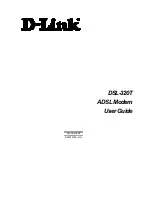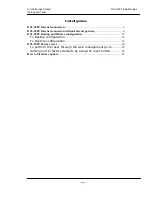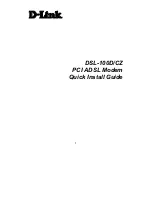
User Guide
19
PVCs Summary:
Click the button, and you can view the summary information about
the PVCs.
Status:
If you want to use a designed VC, you should activate it.
VPI:
Identifies the virtual path between endpoints in an ATM network. The valid range
is from 0 to 255. Please input the value provided by your ISP.
VCI:
Identifies the virtual channel endpoints in an ATM network. The valid range is
from 32 to 65535 (1 to 31 is reserved for well-known protocols). Please input the
value provided by your ISP.
ATM QoS:
Select the Quality of Service types for this Virtual Circuit, including CBR
(Constant Bit Rate), UBR (Unspecified Bit Rate) and VBR (Variable Bit Rate). These QoS
types are all controlled by the parameters specified below, including PCR (Peak Cell
Rate), SCR (Sustained Cell Rate) and MBS (Maximum Burst Size). Please configure
them according to your needs.
IPv4/IPv6:
Select the version of IP.
Encapsulation:
There are four connection types: Dynamic IP Address, Static IP Address,
PPPoA/PPPoE and Bridge Mode. Please choose the designed type that you want to use.
After that, you should follow the configuration below to proceed.
1)
Dynamic IP Address
Select this option if your ISP provides you an IP address automatically. This option is typically
used for Cable services. Please enter the Dynamic IP information accordingly.
Encapsulation:
Select the encapsulation mode for the Dynamic IP Address. You can
leave it default.
Bridge Interface:
Activate the option, and the modem router can also work in Bridge
mode.
















































